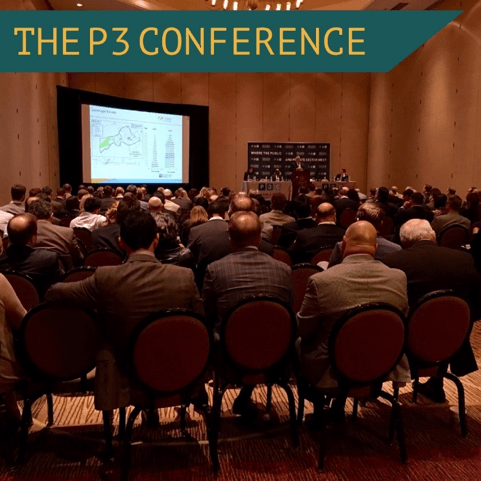The P3 Conference: What Owners & Service Providers Need To Know
March 24, 2016 | By Kevin Cray RESET attended The P3 Conference for the third consecutive year, and turnout from national owners in both the public and private sectors reveals a continued need for creating performing assets which solve long-term capital issues connected to growth.
RESET attended The P3 Conference for the third consecutive year, and turnout from national owners in both the public and private sectors reveals a continued need for creating performing assets which solve long-term capital issues connected to growth.
There were some recurring themes that throughout the conference that had significant impact on the success of Public-Private Partnership projects for all parties. It is important to note that for both sides of the table, understanding the “why” is just as important as the “how”.
Owners
P3 isn’t just about getting financing when you don’t have the money to pay for large capital expenditures. Before committing to do a project in the P3 delivery model, Owners must have a clear idea of the following:
- Define your need- The need is about what problems you are trying to solve. The project itself is simply the result or solution to this problem. For example, are you trying to better engage students? Do you need to revitalize an area of downtown to improve the quality of life for citizens? If you can’t articulate the problem, you won’t get what you need.
- Know your objectives and requirements- In most cases, there is a specific annual allotment which must be honored so that the project doesn’t impact the current operating budget. For instance, do temperatures in labs or operating rooms need to stay always be within certain parameters? Do you want the windows cleaned on the exterior once a week, month or year? These types of things cost money on an ongoing basis. You don’t have to have all of the answers upfront, but your leadership team has to be on the same page for high priority requirements for the facility.
- Determine the timeline- P3’s are very, very complex deals. If you desire to have a shovel in the ground in 90 days, think again. Lawyers are heavily involved in the process, including some of the nitty gritty details such as performance metrics and penalties for not meeting those metrics to name a few.
- It’s a performing asset- Remember: you are paying for an asset over time that meets agreed-upon performance metrics. This even can include operations and maintenance costs, so you have facilities that are always well-maintained because maintenance costs are included in the initial project price. It provides budget stability without allowing the quality of the facility to diminish over time.
Service Providers
It is never about having the lowest price. P3 provides a different approach to projects, so understanding what the process is all about is crucial.
- Business & Political Issues- It is pivotal to know what the underlying issues are that the owner wants to solve. This is a very emotional process for the owner as a whole, but also individually for the decision makers and key stakeholders. You are asking them to commit as an organization to you for the next 25-50+ years. The more you understand about the owner and what is driving them, the more likely you are to be selected to do the work.
- Design, Design, Design- The most important phase of a P3 project is the design and conceptualization of the project. This needs to include everyone on the project team and should even include the inputs of sub-contractors. These projects are all about doing it right the first time.
- It will be on time and on budget- There is a huge risk when it comes to the construction of P3 projects. The project team as a whole is accountable for any costs over the agreed upon construction budget. Penalties for not delivering the project on time are exponentially greater than traditionally procured projects.
- Commitment- P3 projects are not done after construction. These projects typically have 25 year or longer operations and maintenance agreements. Your company and the team you are on are in it for the long-haul.
Here’s the Bottom Line….
Public-Private Partnerships are becoming relevant in the United States, and both owners and service providers who fail to embrace the P3 model could easily fall behind their competitors in the next 5-10 years. Owners are vulnerable if they don’t solve the correct issue and service providers are susceptible for not knowing what issue is that they are trying to solve.
-
Your comment is awaiting moderation. This is a preview; your comment will be visible after it has been approved.
Thank you for your sharing. I am worried that I lack creative ideas. It is your article that makes me full of hope. Thank you. But, I have a question, can you help me?
-
Your comment is awaiting moderation. This is a preview; your comment will be visible after it has been approved.
Can you be more specific about the content of your article? After reading it, I still have some doubts. Hope you can help me. https://accounts.binance.com/hu/register-person?ref=FIHEGIZ8
-
Your comment is awaiting moderation. This is a preview; your comment will be visible after it has been approved.
Your article helped me a lot, is there any more related content? Thanks!
